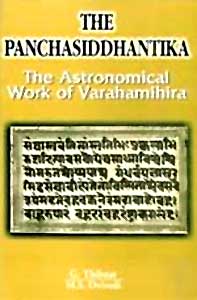 Scholarly treatises in Sanskrit literature basically had redefined the gradual ushering in of the rather solemn domains in the field of research and and education, like astronomy, mathematics or the study of occult practices. The ancient Hindu ruling empires, in this regard were the prime patrons of such enthusiastic abundance of knowledge. Indeed, Sanskrit literature by the Classical Sanskrit age virtually had captivated every field of daily life, tending towards entertainment, education, religion, rituals, etc. The so-called `high-classed` and elegant section of the stratum had imbibed these scholarly treatises to their everyday regimen, with an overwhelming response of erudite Hindu men generating interest to pen down more of their creations and inventions.
Scholarly treatises in Sanskrit literature basically had redefined the gradual ushering in of the rather solemn domains in the field of research and and education, like astronomy, mathematics or the study of occult practices. The ancient Hindu ruling empires, in this regard were the prime patrons of such enthusiastic abundance of knowledge. Indeed, Sanskrit literature by the Classical Sanskrit age virtually had captivated every field of daily life, tending towards entertainment, education, religion, rituals, etc. The so-called `high-classed` and elegant section of the stratum had imbibed these scholarly treatises to their everyday regimen, with an overwhelming response of erudite Hindu men generating interest to pen down more of their creations and inventions.
The earliest subsisting Sanskrit treatise on astrology is the Yavanajataka, or as is interpreted in English, "sayings of the Greeks" (3rd century). Classical Hindu astrology is wholly based upon early medieval compiling, particularly the Brhat Parasara Horasastra and Saravali (7th to 8th century). The earliest surviving treatise, precisely of a non-divinatory nature in Indian astronomy antedates the Yavanajataka: the Vedanga Jyotisha of Ladaga records and states the position and condition of the Mauryan Empire. Astronomy of the classical Gupta period, the centuries subsequent to the Indo-Greek liaison and link, is documented in treatises acknowledged as Siddhantas (literally standing for "established conclusions"). Varahamihira in his Pancha-Siddhantika triumphantly counterpoints five of these authoritative astronomical scriptures: The Surya Siddhanta besides the Paitamaha Siddhantas (which bears near similarity with the "classical" Vedanga Jyotisha), the Paulisha and Romaka Siddhantas (directly based upon Hellenistic astronomy) and the Vasishta Siddhanta.
The earliest proof of authentic treatise in Indian mathematics is the Aryabhatiya (penned ca. 500 C.E.), a work on astronomy and mathematics. The mathematical section of the Aryabhatiya in Sanskrit literature was compiled of 33 sutras (in the pattern of verse) consisting of mathematical statements or rules, but bearing no kind of proofs. Commencing from the time of Bhaskara I (600 C.E. onwards), prose commentaries were inclined to include more and more derivations (upapatti) of particular kinds.
"Tantra", yet another astounding form in Sanskrit literature is defined as a generalised term for a scientific, wizardly or mystical treatise and mystical texts. It is believed that both Hindus and Buddhists concern themselves with five subjects, namely: 1. the creation, 2. the annihilation of the universe, 3. the worship of the Gods, 4. the accomplishment of every object, and, 5. the four manners of being united with the Supreme Spirit by meditation. These Sanskrit literary texts date back to the times of Classical Sanskrit literature, believed to span its total lifetime.



















